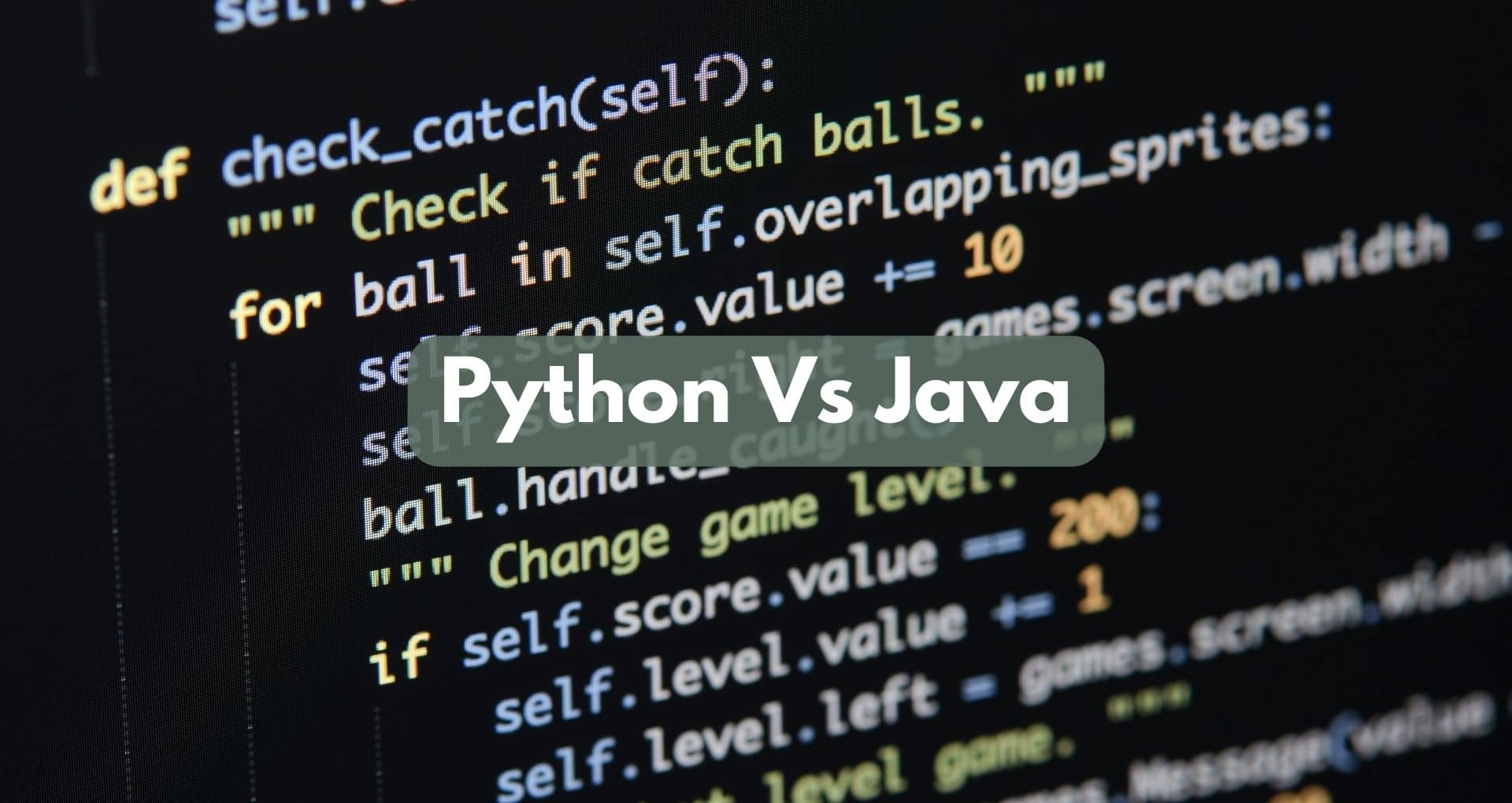In this article, we will explore the key differences and similarities between Python and Java, two popular programming languages. Delving into various aspects such as syntax, performance, and application areas, we will provide you with a comprehensive comparison of these languages.
Whether you are a beginner in programming or an experienced developer, this article aims to give you valuable insights into the strengths and weaknesses of Python and Java, helping you make an informed decision on which language to choose for your projects. So let’s jump right in and explore the world of Python and Java together!
Syntax
Python Syntax
Python syntax is known for its simplicity and readability. It uses indentation to define blocks of code. This makes Python code elegant and easy to understand. Additionally, Python syntax is concise, allowing developers to write code with fewer lines compared to other languages. Python uses a combination of keywords, operators, and punctuation to form statements and expressions. It also supports dynamic typing, which means the type of a variable is determined at runtime.
Java Syntax
Java syntax is more verbose compared to Python. It uses curly braces to define blocks of code and semicolons to separate statements. This can make Java code appear more cluttered and require more lines of code to achieve the same functionality as Python. Java is a statically typed language, which means that variables must be declared with their type before they can be used. This adds an extra step in the coding process, but it also helps catch errors at compile-time.
Data Types
Python Data Types
Python supports a variety of built-in data types, including integers, floats, strings, booleans, lists, tuples, dictionaries, and sets. It also has a dynamic typing system, which means variables can hold values of different types during the execution of a program. This flexibility allows for faster development and prototyping. Python also includes support for complex numbers and has a special ‘None’ type to represent the absence of a value.
Java Data Types
Java has a similar set of basic data types as Python, including integers, floats, booleans, and strings. However, Java enforces strict typing, meaning that variables must be declared with a specific type and can only hold values of that type. Java also has a more extensive collection of data types, such as arrays, classes, interfaces, and enums. These additional data types make Java more suitable for larger, more complex applications.
Control Structures
Python Control Structures
Python provides a range of control structures, such as if-else statements, for and while loops, and switch statements (in newer versions). The indentation-based syntax enhances the readability of control structures. Python also offers a comprehensive set of logical and comparison operators for conditional statements and loop control. The ‘in’ operator is particularly useful for iterating over iterables like lists or strings.
Java Control Structures
Java has a similar set of control structures to Python, including if-else statements, for and while loops, and switch statements. Unlike Python, Java uses curly braces to define blocks of code. Java also provides a wide range of logical and comparison operators for conditional statements. Additionally, Java supports the ‘break’ and ‘continue’ statements to control loop execution. Switch statements in Java are often used for multi-way branching based on a specific value.
Also Check: How To Choose The Right Graphics Card
Object-Oriented Programming
Python OOP
Python is an object-oriented programming (OOP) language and supports the four main principles of OOP: encapsulation, inheritance, polymorphism, and abstraction. In Python, everything is treated as an object, and classes are used to define objects and their behavior. Python supports single inheritance, where a class can inherit attributes and methods from one parent class. It also supports multiple inheritance through the use of mixins.
Java OOP
Java is known for its robust support for OOP. It promotes the use of classes, objects, and methods to structure code. Java supports encapsulation, inheritance, and polymorphism, as well as interfaces, allowing for multiple inheritance-like behavior. Unlike Python, Java enforces access modifiers, such as public and private, to control the visibility of class members. This adds an extra layer of encapsulation and helps ensure proper data hiding.

This image is property of images.pexels.com.
Memory Management
Python Memory Management
Python uses automatic memory management to handle memory allocation and deallocation. It has a garbage collector that automatically frees up memory space when objects are no longer referenced. Python’s garbage collector uses a combination of reference counting and cyclic garbage collection to manage memory efficiently. This allows developers to focus more on writing code and less on memory management.
Java Memory Management
Java also utilizes automatic memory management through a garbage collector. Java’s garbage collector is more advanced compared to Python’s, as it uses a combination of techniques such as mark-and-sweep and generational garbage collection. This allows Java to handle large-scale memory management more efficiently. Java also provides features like manual memory deallocation using the ‘finalize()’ method for developers who require more control over memory management.
Performance
Python Performance
Python is an interpreted language, which can lead to slower execution compared to compiled languages like Java. However, Python provides various techniques, such as using built-in functions and libraries, for optimizing performance. Python also has the ability to integrate with low-level languages, like C or C++, through libraries like NumPy and Cython. This allows critical performance-sensitive code sections to be written in a faster language while still benefiting from Python’s high-level features.
Java Performance
Java is a compiled language, which means it is generally faster than interpreted languages like Python. The bytecode generated by the Java compiler is executed by the Java Virtual Machine (JVM), which optimizes the code at runtime. The JVM provides Just-In-Time (JIT) compilation, which dynamically compiles frequently used code paths to native machine code for better performance. Java’s performance is further enhanced by its extensive standard library and ecosystem of performance optimization tools.
Standard Libraries and Frameworks
Python Standard Libraries and Frameworks
Python has a rich set of standard libraries and frameworks that cover a wide range of applications. The Python Standard Library includes modules for tasks such as networking, file handling, regular expressions, and more. Popular Python frameworks, such as Flask and Django, provide high-level abstractions and tools for web development. Other libraries, like NumPy, Pandas, and Matplotlib, are widely used for scientific computing, data analysis, and visualization.
Java Standard Libraries and Frameworks
Java has a comprehensive set of standard libraries that cover a wide range of functionalities. The Java Standard Library includes packages for networking, file handling, database connectivity, and more. Java also has a rich ecosystem of frameworks, such as Spring, Hibernate, and Apache Struts, that provide a foundation for building enterprise-grade applications. These frameworks offer tools and abstractions for various development tasks, including web development, database integration, and dependency injection.
Community and Ecosystem
Python Community and Ecosystem
Python has a large and vibrant community of developers, which contributes to its popularity and growth. The Python community is known for its inclusiveness and supportiveness, making it easy for beginners to get started and for experienced developers to collaborate. Python has an extensive ecosystem of third-party libraries and packages available through the Python Package Index (PyPI). This allows developers to leverage existing code and solutions, greatly enhancing development speed and productivity.
Java Community and Ecosystem
Java has a strong and well-established community of developers worldwide. The Java community is known for its robustness and the availability of resources and documentation. The Java ecosystem is vast, with a wide range of libraries, frameworks, and tools available. The Oracle Corporation, the primary maintainer of Java, provides extensive documentation and support, further strengthening the Java community and ecosystem.
Source: TheTechBrain AI
Usage and Applications
Python Usage and Applications
Python is a versatile language that can be use for various applications. It is commonly use in web development, scientific computing, data analysis, machine learning, artificial intelligence, and automation. Python’s simplicity and ease of use make it an excellent choice for beginners as well. Many popular websites and platforms, such as Instagram, Pinterest, and YouTube, have leveraged Python to build their applications.
Java Usage and Applications
Java is widely use in enterprise-level software development, web applications, mobile applications, and Android app development. Its robustness, performance, and platform independence make it a popular choice for building large-scale systems. Many prominent companies, including Google, Netflix, and Amazon, rely on Java for their critical systems and applications. Java’s compatibility with the Android platform has also contributed to its widespread adoption in mobile app development.
Conclusion
Both Python and Java are powerful programming languages, but they have distinct characteristics and use cases. Python excels in readability, ease of use, and rapid prototyping. It is well-suit for web development, scientific computing, and data analysis. Java, on the other hand, is known for its performance, scalability, and extensive ecosystem. It is commonly used for enterprise-level applications, mobile app development, and large-scale systems.
The choice between Python and Java ultimately depends on the specific requirements of the project and the preferences of the development team. Python offers simplicity and versatility, while Java provides performance and reliability. Regardless of the language chosen, both Python and Java have flourishing communities and abundant resources to support developers in their endeavors.



